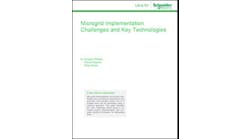Credit: John Haslam – Flickr
Energy companies often envy those like Apple or Netflix that capture the collective imagination. If only consumers felt the same about smart meters, or insulation or attic fans! But alas, energy products lack allure – at least that’s the truism.
Someone forgot to tell this to Nest, which appears to be moving the plebeian home thermostat along the proven Silicon Valley path from plain-Jane device to new tech wonder. Nest says that it reinvents “unloved but important home products.”
In short, the Palo Alto company is mimicking the kind of formulas that put a cell phone in everyone’s pocket.
First, Nest told us its learning thermostat was intuitive and elegant and can do all kinds of things never imagined of the Neanderthal thermostat you probably have on your wall.
Next, it set up automatic updates, so its devices could do even better things after they were already installed.
Then, last year it won a headline grabbing deal, a $3.2 billion purchase of the company by Google.
Now, it’s honing on what we all love about new tech gadgets. They seem so worth the money.
Usually this realization hits us when the price takes a big dive. But Nest isn’t reducing the $249 retail price; instead it is trying to demonstrate that the learning thermostat is a bargain. It pays for itself in less than two years.
“You can justify it because if you let it program itself, it will pay for itself,” said Ben Bixby, Nest general manager of energy services, during a recent interview.
This conclusion comes from three recent studies, one by Nest and two by independent organizations, the Energy Trust of Oregon and Indiana utility Vectren.
Two-year payback
The studies show that homes with Nest Learning Thermostats save an average of 10 to 12 percent on electric costs and 15 percent on central air conditioning, or $131-$145 per year.
“This is just something great you’d buy for your home, the same way you’d buy a toaster oven or a new microwave. But how many of your toaster ovens or microwaves have paid for themselves?” Bixby said.
The findings are significant because programmable thermostats have faced criticism for not netting promised savings. Even Nest had estimated savings of 20 percent in the past.
The problem? The estimates are lab ideals and don’t reflect what actually goes on in the home. Some people had made a practice of adjusting their thermostats at night before installing the the programmable thermostat, so the device did not make a huge difference. Others overrode the programming and forgot to reset it.
On the other hand, 95 percent of Nest thermostats remain on schedule, the company says. This is because the thermostat does a lot of the thinking, remembering and setup for the homeowner by tracking household behavior (when you’re home or out), remembering preferred temperatures and creating a custom home schedule.
Of course, the new findings are only averages. Energy savings may be higher or lower based on where people had set their temperatures before installing the learning thermostat. Savings also are influenced by home occupancy patterns, house characteristics, and climate, said a white paper released by Nest February 2. And payback may be quicker where governments or utilities offer incentives for the thermostat, some up to $200. The thermostat sells through utility channels, HVAC installers and retailers like Amazon or home improvement stores.
Overcomes Heat Pump Curse
Of the three studies, the Energy Trust of Oregon inquiry is particularly interesting because it looked at homes with heat pumps. The U.S. Department of Energy has warned that programmable thermostats may not work well with heat pumps; they can lead to inefficient activation of the heating system.
Nest attempted to deal with this problem through specialized algorithms. And the Oregon study found that it worked; the learning thermostat cut electric heating use by 12 percent in homes with heat pumps. In addition, 68 percent of the participants reported increased comfort in the home.
Another intriguing finding in Oregon — 34 percent of the participants said the thermostat was worth the price even if it saved no energy.
What’s giving the learning thermostat that added charm?
“My read is it’s a combination of the results that Nest produces…the feeling that something is listening to you, and understanding you, and reacting to what you need, when you need it,” Bixby said.
Sounds a lot like the family dog. But the Nest learning thermostat even pays for itself. No wonder it’s finding a spot in the home.
A white paper that details the three studies can be found here.
Read more stories like this by subscribing to Energy Efficiency Markets’ free newsletter.






